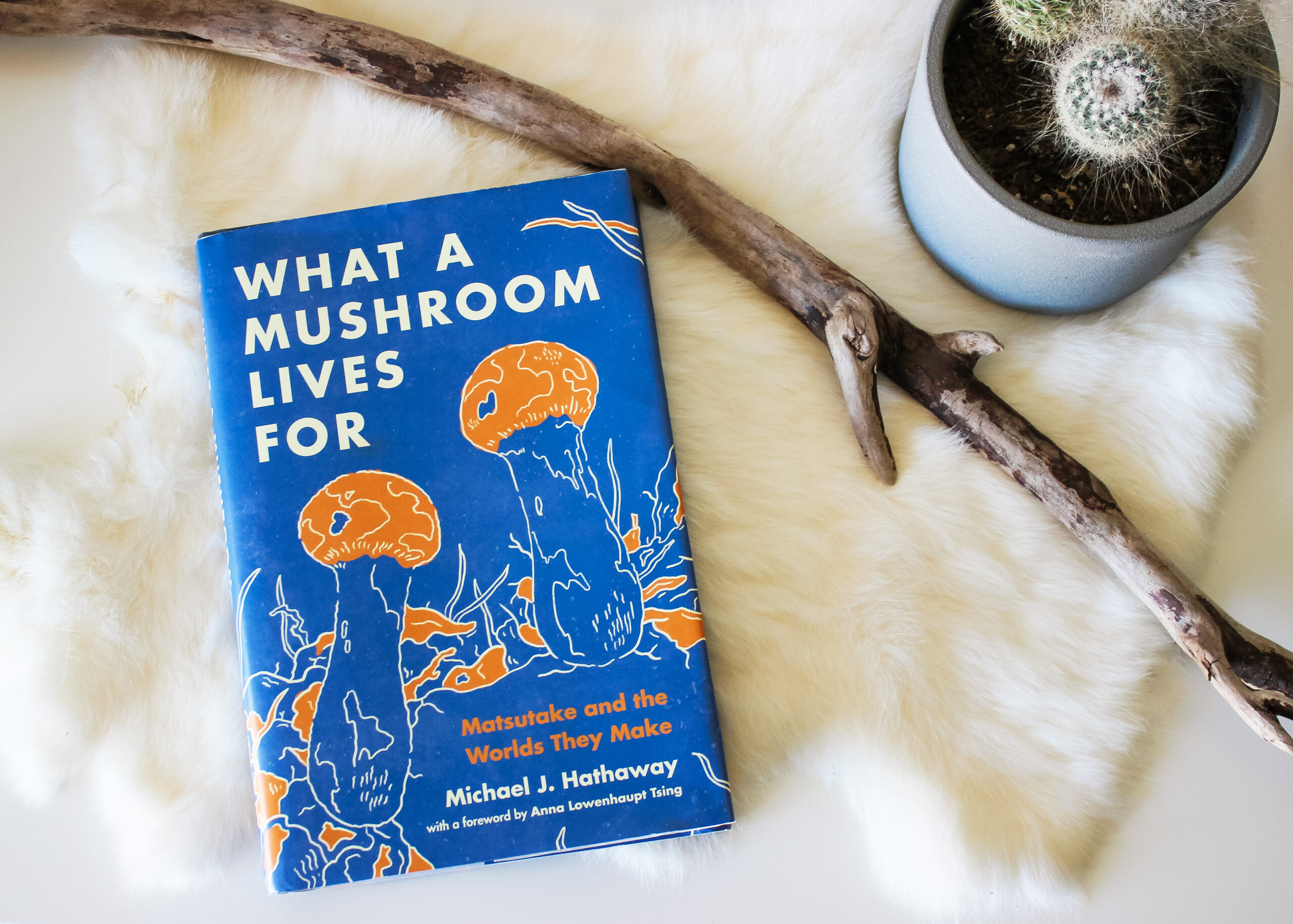
By: Jocelyn Stevens, SFU Student
On July 16, I found myself attending my first book launch event for SFU anthropology professor Michael Hathaway’s new book, What a Mushroom Lives For: Matsutake and The Worlds They Make. Although I’m not currently an avid reader, my obsession with mushrooms propelled me to buy the non-fiction book without a second thought. The event was hosted at Massy Arts Society, and Hathaway was joined by Spencer Greening, a Gitga’at doctoral student at SFU. They shared a conversation about the book and the ways fungi have been interpreted in western societies.
Owned and operated by the same crew from Massy Books, the room was cozy with lots of cool books and art showcased throughout. The energy at the event was very welcoming, and the community of fellow mushroom lovers in the audience were chatting away like old friends. Complete with complimentary food and wine, the book launch felt more like a living-room gathering.
In the first part of What a Mushroom Lives For, the reader is able to reimagine fungi as more than a simple mushroom on the forest floor. Hathway argues our planet is habitable because of fungi and how they are critical life partners for all living things.
The second half of the book focuses on Hathaway’s research in China on a specific mushroom — the matsutake — and the important role this sole fungi plays in our world. Hathaway talked about his time with the Tibetan and Yi people and how the matsutake has impacted their ways of life and interactions with the land. This point was contrasted with the fact that matsutakes are a multibillion-dollar global trade item. Hathaway was challenged to think about forms of “agency and observation” in ways that he never thought of before in relation to plants and fungi. He hopes others will be challenged in the same way when reading his book.
“It’s just a given that other beings have agency,” Greening said when asked to share his Indigenous knowledge in relation to Hathways findings on fungi. “When I hear elders talk about other beings [ . . . ] they’re talked about in a way that they’re just human. We might say the mountain goat people, the wolf people, the salmon people, and often when I hear oral histories, they say society. The mountain goat society, the salmon society, again, it’s this expression that there’s this deep, sort of institutionalism.”
Greening then asked Hathaway if there are any examples of institutionalism in the mushroom world. Hathaway brought up an example of encountering this in his personal life.
“[I was] looking at this piece of cutting board that I have from an old pear tree and you can see the histories of fungal interactions in that, you see these black lines as they’ve engaged,” expressed Hathaway. “There are these interesting physical archives of the histories of these relations going on that we just have the slightest hint.”
The idea that mushrooms, too, have institutionalism similar to other beings was very eye-opening. Even though I went into this event with some knowledge about mushrooms, it altered my views of fungi and their agency.
Despite fungi being associated with poison in western societies for so long, it was encouraging to have people come together with open minds and listen to two people talk about the ways in which fungi shape our world. I found myself very engaged with the conversation, listening to Hathaway and Greening’s conversation at the edge of my seat.
With all the fascinating things I learned about the magical matsutake from the event and the book so far, I’m really looking forward to reading more about “the worlds they make.”
You can purchase What a Mushroom Lives For: Matsutake and The Worlds They Make at Massy Books either online on their website or in store.
